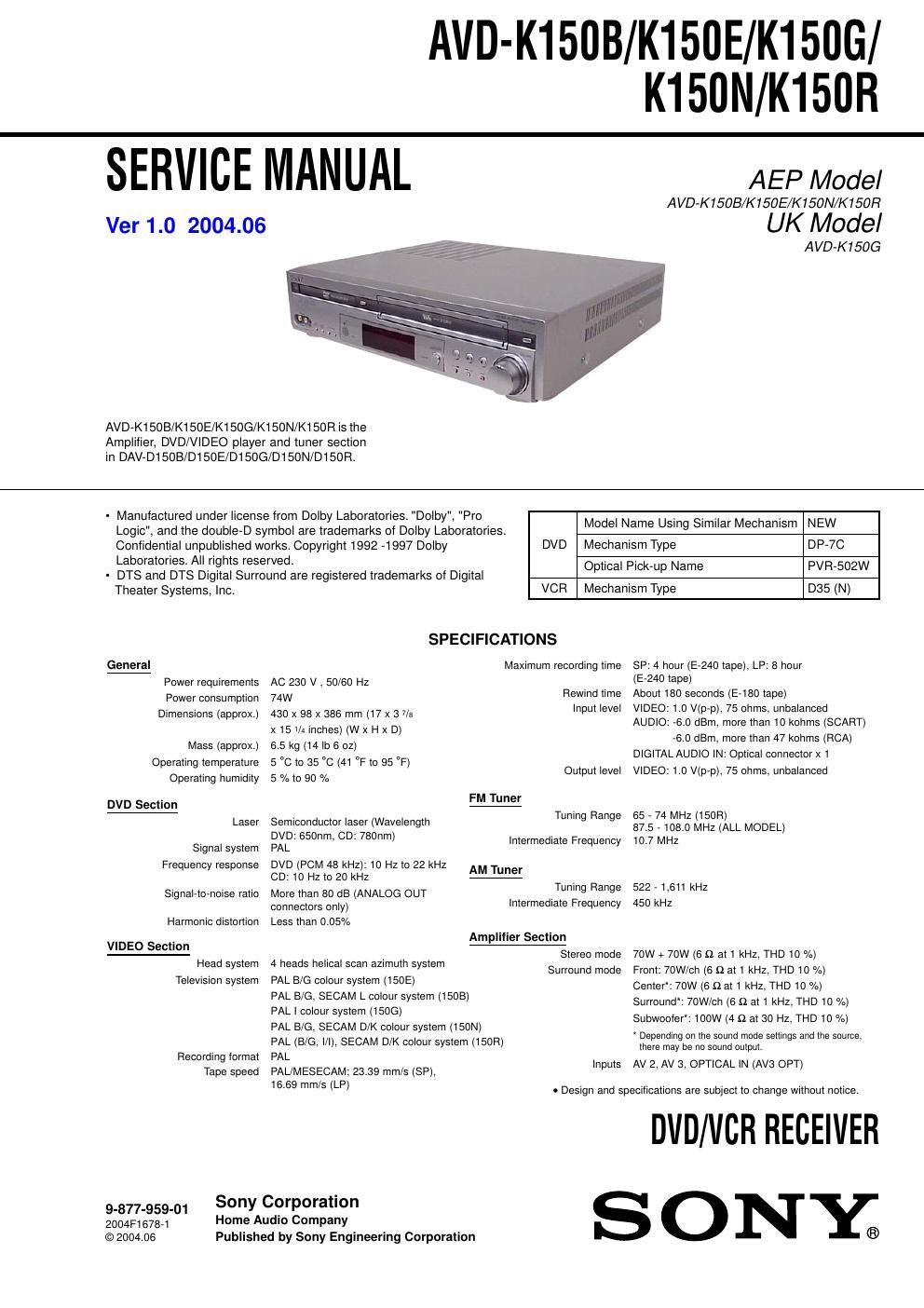Sony avd k 150 b service manual
This is the 92 pages manual for sony avd k 150 b service manual.
Read or download the pdf for free. If you want to contribute, please upload pdfs to audioservicemanuals.wetransfer.com.
Page: 1 / 92
